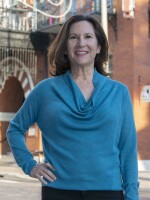The Tampa Bay Times just completed an investigation into a group of low-performing elementary schools in black neighborhoods of southern Pinellas County -- schools that they're calling "Failure Factories." WUSF's Robin Sussingham spoke with reporters Michael LaForgia and Cara Fitzpatrick... and asked what they discovered about those schools that made them want to dig deeper:
LaForgia: Well, what we found out is that African-American kids in these schools are doing worse than African-American kids in virtually any other schools in Florida. In fact, ninety-five percent of the black kids who were tested in these schools in 2014 failed reading or math. The situation in these schools was much better a decade ago. This is a recent phenomenon. And it stems directly from actions by the school board.
Fitzpatrick: As the schools re-segregated experienced teachers fled in droves. And they've been replaced largely by less experienced teachers. And in one year that we looked at, one of the more recent years we looked at, seventy percent of teachers in those five schools asked for a transfer out.
Sussingham: You mentioned that things were a lot different a decade ago, and that things changed in 2007. So what changed?
LaForgia: Well, in 2007 the school district got out from under federal oversight that had been mandated by a civil rights lawsuit filed in the 1960s. Essentially, the way it was before, children were bused in order to maintain certain racial quotas. No school was allowed to be more than a certain percentage African-American. They changed that and what they did was they went to what is called a neighborhood schools model. And as part of that kids who lived in predominately black neighborhoods would suddenly be going to predominately black schools. It was de facto re-segregation.
Sussingham: So basically they stopped busing?
LaForgia: That’s right.
Sussingham: Let me ask you about the term that you're using--segregation and re-segregation. Those are very loaded terms. Generally people think of segregation as a policy of keeping people of different races apart. Is that what you’re saying, that they are doing this on purpose to keep the races apart?
LaForgia: Let’s be clear. There was never any question about what was going to happen they went to neighborhood schools. They voted for a plan that in effect re-segregated the schools.
Fitzpatrick: One of the things I think that education researchers talk about when they look at school quality issues is that when you have concentrations of poverty in schools and when you have concentrations of minority students in schools, what you often get are not as good schools. And in this case we took neighborhood schools, and board members were warned at the time, there were concerns in the black community at the time, that we would be putting a lot of high needs kids into neighborhood schools. And board members said there would be more resources for those schools. That hasn’t been the case until very recently.
Sussingham: How do you tease out the responsibility for how poorly these schools are performing? What’s the district’s responsibility in this and what can just be attributed to what’s going on in this neighborhood—the pathology of the neighborhood the school is in?
LaForgia: Well, the way that we addressed that directly was by looking at what you could measure about a community. And what we found is that there is nothing measurable about the black community in Pinellas County that explains the phenomenon that we’re seeing. The rates of median household income, poverty, education level, single parent homes, they are all dead in the center when it comes to ranking Florida counties on these things.
A lot of folks blame parents when you have conversations like these. And we took a look at that as well. And what we did was we analyzed state kindergarten readiness testing data. What that showed is that our children were no less ready than children in scores of other high poverty schools across the state. However, after a few years in Pinellas County schools they were trailing far behind their peers.
Sussingham: Michael LaForgia and Cara Fitzpatrick thanks so much for talking with us.
LaForgia, Fitzpatrick: Thank you.





